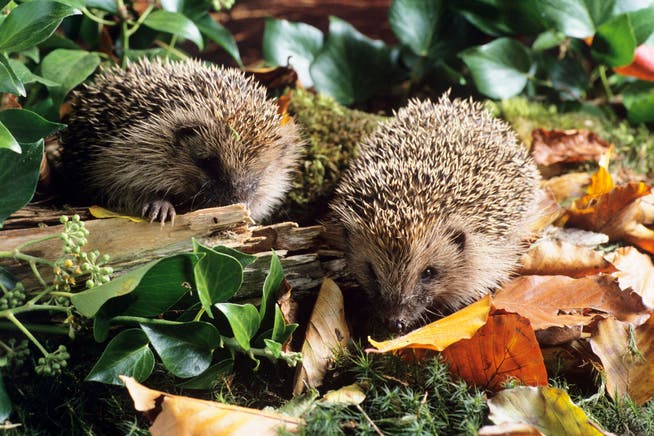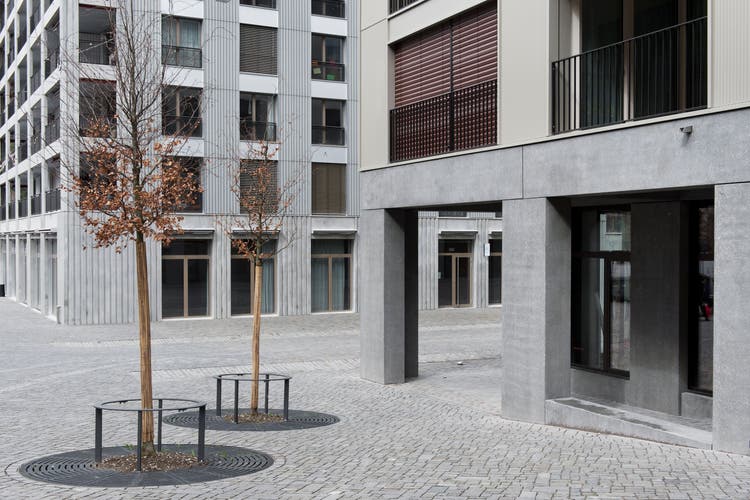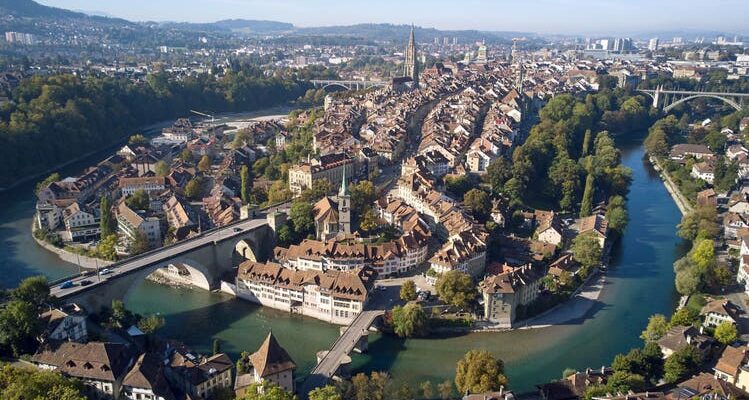The intensively used agricultural areas of the Swiss Mittelland offer fewer and fewer species a suitable habitat. Many find a last refuge in settlements. A development that is anything but positive.
The city of Bern has a high level of biodiversity, especially along the Aare.
When the children’s book series “When the animals left the forest” (originally: “The Animals of Farthing Wood”) was published in 1979, the modern city was considered a place hostile to life. The books tell the story of “fox” and “badger” and other wild animals who are forced to leave their homes behind. The people are coming. They use construction machines to dig up the heath and the forest where the animals live to make room for houses. «Fox» and «Badger» become the leaders of the fleeing forest dwellers, who eventually find refuge in a national park.
The book series, which was also adapted as an animated series in the 1990s, is only partially up-to-date today. Humans are still primarily responsible for the destruction of the habitats of numerous animal and plant species, as the UN species protection conference showed this month. The expansion of the settlement area is one of many reasons for the current biodiversity crisis. But the view of the city as a generally remote place from nature is now considered outdated.
In fact, numerous species have made the settlement space their own since humans became sedentary. Some of them only recently. The first urban foxes were observed in Great Britain in the 1930s. In Switzerland, this development only took place decades later because of the rabies epidemic in the 1960s. In the meantime, foxes have also arrived in the cities of this country. Thanks to food waste and fallen fruit, they will find a richly set table there. With the badger, another predator conquered the city as a habitat after the turn of the millennium. Other species such as the house sparrow have long been an integral part of our communities. So the sparrow should, according to one study in the Near East joined humans 10,000 years ago when they began to settle down.
The “rural exodus of the animals”
What is new, however, is what scientists are observing in the Swiss Mittelland and in other regions of Western and Central Europe and has already been dubbed the “rural exodus of species” by some media. Certain animals and plants often find better living conditions in towns and villages than in the surrounding, intensively used fields and meadows. In the Swiss Mittelland, for example, this could be determined as part of the biodiversity monitoring for vascular plants, mosses and mollusks. For example, the striped toadflax – a species typical of sparsely overgrown roadsides and forest clearings – is now more common in the southern districts of the city of Geneva than in the surrounding agricultural areas.
The hedgehog is a prominent example of this development. The insectivore was once plentiful in rural areas. But with the intensification of agriculture, many landscape elements that hedgehogs need to survive disappeared: hedges, single trees, insect-rich meadows and pastures. The situation is different in settlement areas: today, green residential areas mostly meet the needs of hedgehogs better than most agricultural areas.

Hedgehogs feel more comfortable in structured gardens than on monotonous farmland.
In fact, there are a multitude of different ecological niches in settlements. Gardens, parks, cemeteries and fallow land often still offer near-natural habitats that have many of the characteristics of biotopes that have been lost in rural areas.
This is partly accompanied by an astonishingly high biodiversity. In Switzerland, for example, 67 percent of all animal species and 45 percent of the native wild plants are found in settlement areas. This emerges from the Swiss flora and fauna databases. Around half of the mammal species can also be found in towns and villages.
City is not equal to city
However, Sabine Tschäppeler warns against generalizing the situation. “The biodiversity of a city is not generally higher than in the countryside,” says the biologist. She heads the nature and ecology department of the city of Bern and is familiar with the biodiversity in settlement areas. If by land you mean a landscape rich in structure, such as the foothills of the Alps or a moorland landscape, then that is clearly not the case, says Tschäppeler. “The biodiversity of a city is only higher than the intensively used surrounding area in certain regions, such as the Swiss Mittelland.”
In addition, biodiversity in cities is by no means evenly distributed. In heavily sealed quarters, such as industrial quarters or historic old towns, only a few species usually find suitable habitats. According to Tschäppeler, on the other hand, biodiversity is particularly high on the outskirts of the city and along near-natural structures. “In Bern, for example, this is the case along the Aare.”
Exactly such city districts have become important refuges. Many species still occur here that have disappeared in the intensively used agricultural zones all around.
Urban sprawl a blessing for nature?
In Switzerland, settlements are the fastest growing habitat. Cities, villages and roads soon cover eight percent of the country. In the densely populated Mittelland, where most of the towns and transport infrastructures are located, they even take up around 16 percent of the area.
A positive development for nature conservation? Tschäppeler denies this vehemently. “The increase in settlement area is in no way positive for biodiversity.” In individual cases, the construction of a new quarter can mean biological added value from a local point of view. For example, when a settlement area with naturally designed gardens is created on a former corn field. “The diversity of species increases at this point, however, because the initial state was much more alien to nature.”
Settlement areas are not a substitute for large, ecologically well-connected habitats in the surrounding area. “The habitats are too small and fragmented, the populations are too small and isolated, and the dangers and barriers, such as those caused by road traffic, are too great,” says the biologist. Due to the high pressure of use, shy species could not live here at all.
Dense construction and house cats threaten biodiversity
What’s more, the future prospects for biodiversity are not rosy in settlement areas either. Because here, too, the pressure is increasing in many ways. According to Andrea Haslinger from Pro Natura, dense construction is one of the most important factors for this. Extensively used areas such as older settlements with spacious outdoor areas, fallow land and gardens with old trees have less and less space and are being built over.

In densely populated settlements without green spaces, most animals find neither food nor cover.
This is already having tangible consequences for many species. “The number of hedgehogs, for example, is now also declining sharply in urban areas,” says Haslinger. The problems usually start with spatial and settlement planning. “Biodiversity still has far too little importance there.” The asphalted area has been increasing for decades. New outdoor spaces in residential and commercial areas are designed in a non-natural way, with sparse, monotonous planting, or are completely sealed. In many new buildings, bats and birds that nest on buildings can hardly find any niches to raise their young. In old houses, such loopholes are disappearing more and more frequently due to renovations.
In Switzerland, there is also a tendency to clean up every last corner. “The lawn must always be perfectly mowed, trees and bushes are cut back every year.” When it comes to biodiversity, less is often more.
The high density of cats is also problematic for species that are already rare. In Switzerland, the domestic cat population is estimated at over 1.7 million individuals. More than 70 percent of these animals are regularly outdoors, where they prey on birds, small mammals and reptiles. The density of cats usually massively exceeds that of native predators. According to the Swiss Ornithological Institute in Sempach, there are projections of 430 cats per square kilometer in the Zurich conurbation. The federal government estimates that domestic cats in Germany capture 30 million birds every year.
However, Stadtgrün Bern is still convinced that the settlement area has potential in terms of biodiversity. For example, it is not mandatory for natural values to disappear with densification, says Tschäppeler. “You can even promote nature at the same time if you give enough importance to biodiversity.” Thanks to appropriate regulations in special use plans and raising public awareness, the proportion of natural habitats in the city of Bern has increased from 14 to 16 percent over the past ten years.
In the Bern practical manual for biodiversity “Nature needs the city” it even says: “In the future, it could be the urban habitats from where endangered species reconquer a landscape that has become more livable.” Like the 1979 children’s book series, it would be a happy ending.
